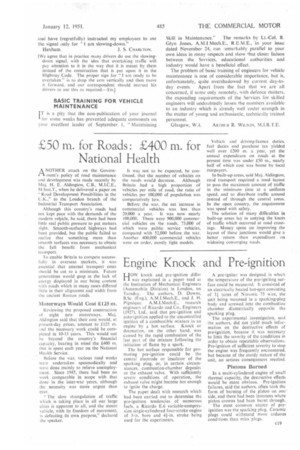Engine Knock
Page 57

If you've noticed an error in this article please click here to report it so we can fix it.
Li OW knock and pre-ignition differ was explained in a paper read at the Institution of Mechanical Engineers (Automobile Division) in London, on Tuesday, The authors, D. Downs, B.Sc. (Eng.), A.M.I.Mech.E., and J. H, Pign8quy, A.M.I.Mech.E., research engineers of Ricardo and Co., Engineers (1927), Ltd., said that pre-ignition and auto-ignition applied to the uncontrolled ignition of a combustible mixture in an engine by a hot surface. Knock or detonation, on the other hand, was caused by the rapid combustion of the last part of the mixture following the initiation of flame by a spark.
The hot surface responsible for promoting pre-ignition could be the central electrode or insulator of the sparking plug, or, in certain circumstances, combustion-chamber deposits or the exhaust valve. With sufficiently severe conditions of operation, the exhaust valve might become hot enough to ignite the charge.
The paper dealt with research which had been carried out to determine the pre-ignition tendencies of numerous fuels, a Ricardo E.6 variable-compression single-cylindered four-stroke engine of 3-in, bore and 41-in. stroke being used for the experiments.




































































































